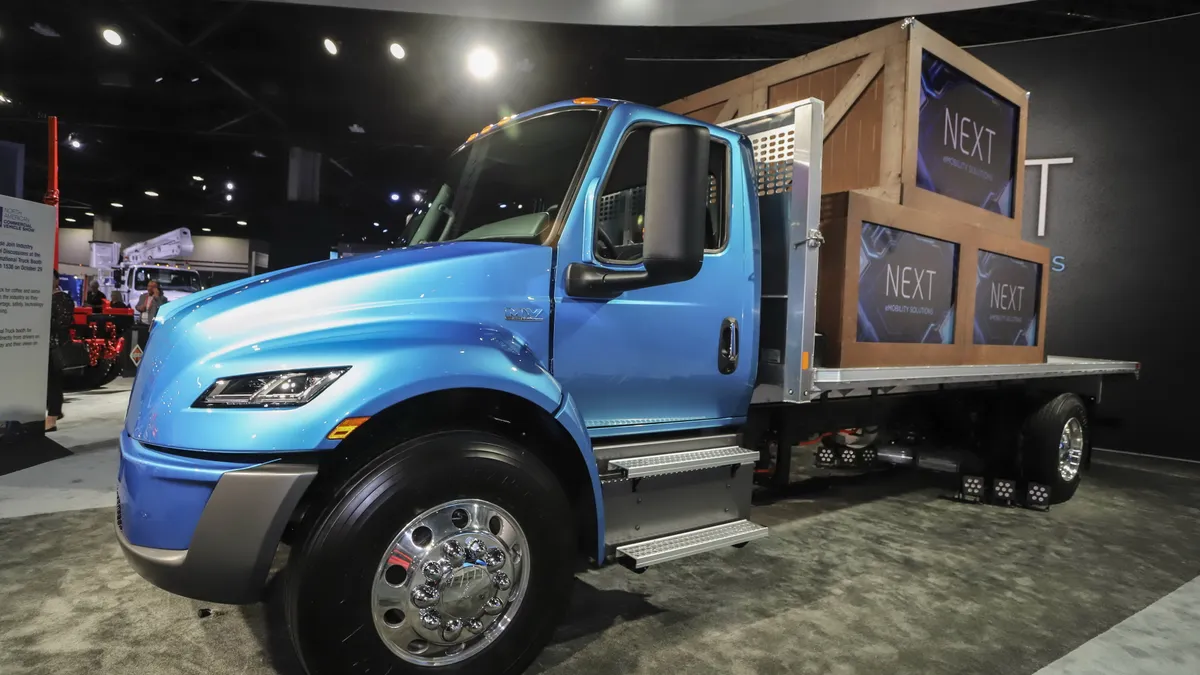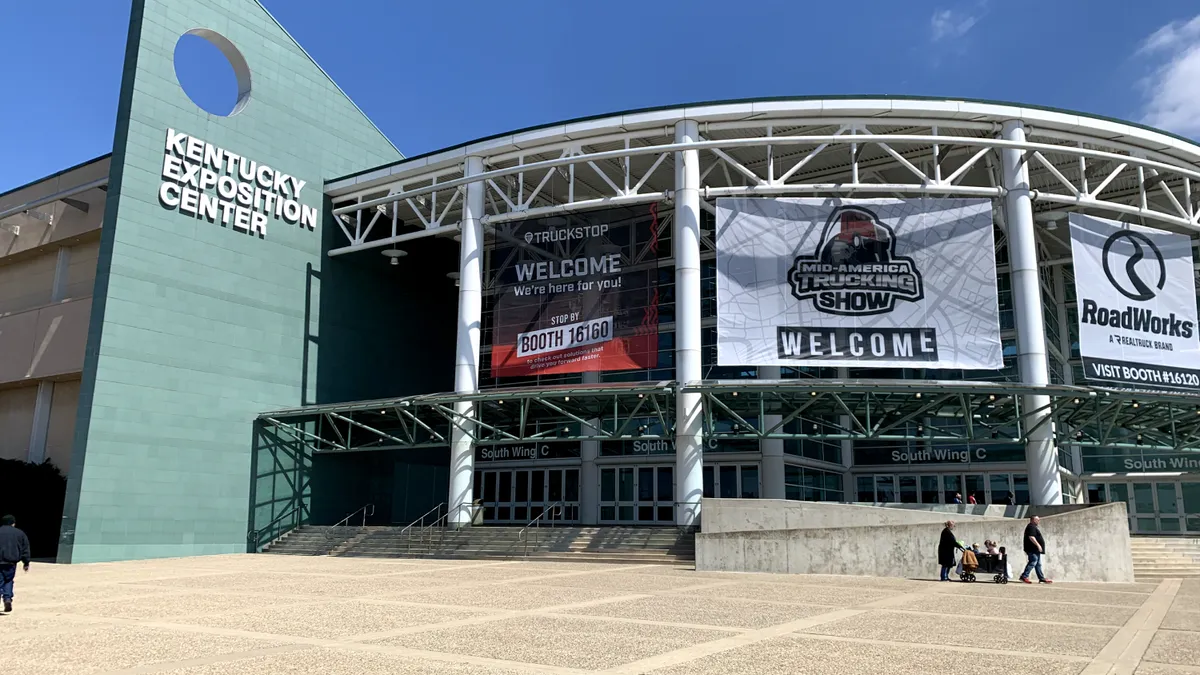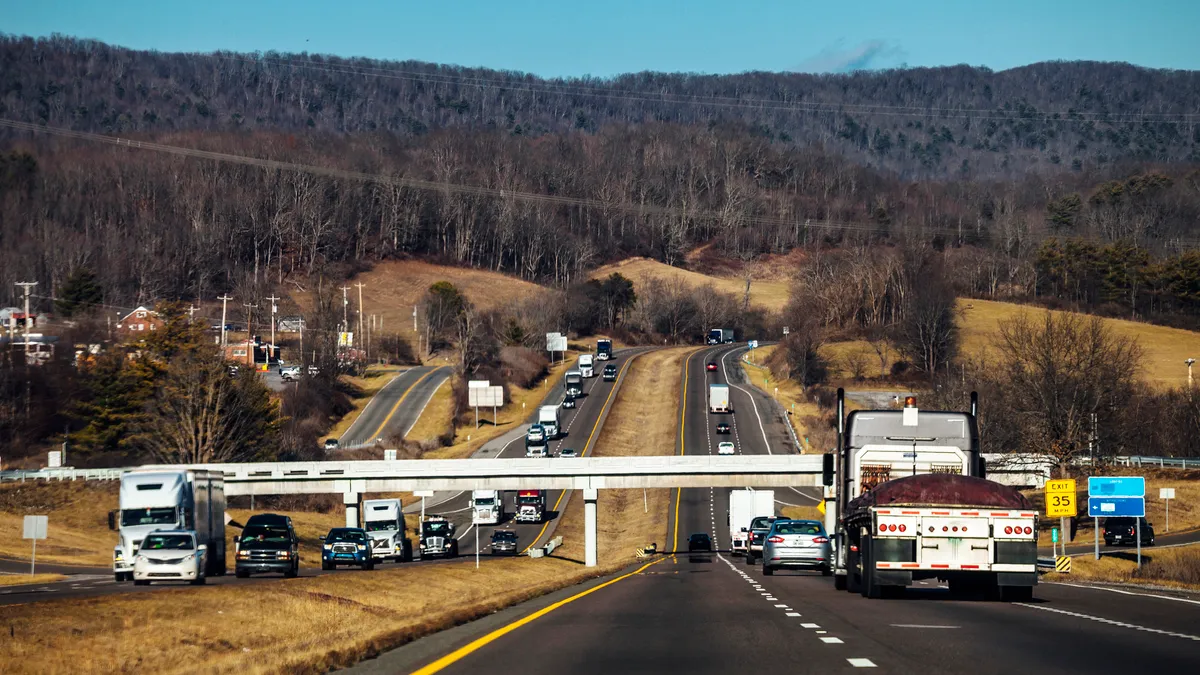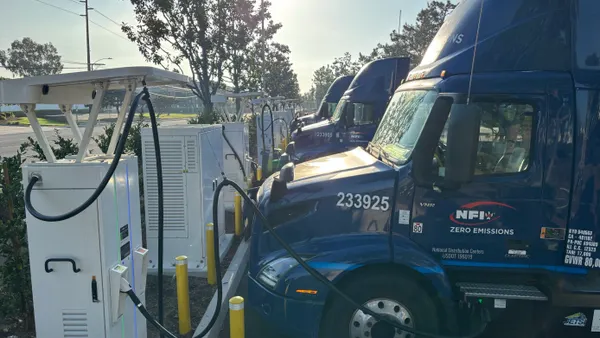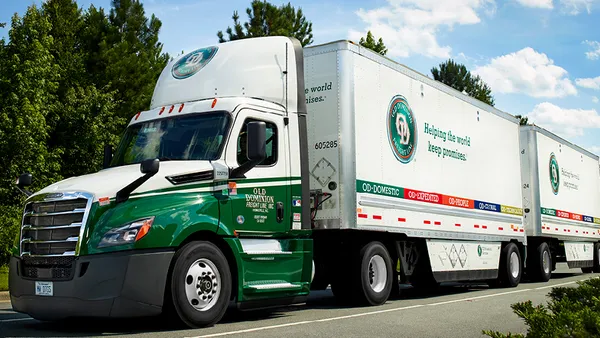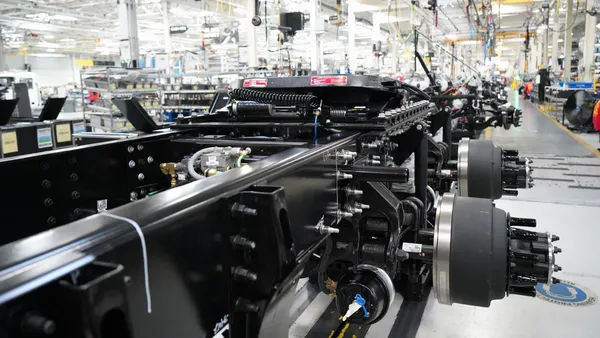Dive Brief:
- Navistar was "moderately successful" in keeping its U.S. factories open during most of the COVID-19 pandemic, despite some supply issues, Troy Clarke, president and CEO, said during Thursday's Q2 earnings call. Nevertheless, the company's revenues dropped 35% year over year in the company's Q2. Some suppliers in Mexico were hit by stay-at-home orders after Navistar factories in the U.S. came fully back online, Clarke said. Full production in Mexico is expected in the next few weeks, he said.
- Navistar's market share of heavy-duty and medium-duty trucks dropped in Q2, primarily because of a decrease in the leasing segments of the trucking industry. Company and dealer inventories dropped 4%.
- Part sales were down about 20%, in line with the industry, as fewer miles driven means fewer parts sales, said Clarke. But as the economy reopens, miles driven will increase, and parts sales will increase, Clarke predicted.
Dive Insight:
Navistar's Q2 report indicates just how much the North American supply chain is dependent upon parts from Mexico. Navistar's truck segment took the biggest hit in the report, with net sales falling $907 million to $1.4 billion. Compmany officials said this drop was partially because of lower Mexico volumes and a decrease in GM-branded units sold. Navistar's parts segments were $443 million, a 23% decrease from Q2 2019.
Kenny Vieth, president of ACT Research, reported preliminary Class 8 orders in May at 6,700 units, up 56% from April but down 38% from May 2019. "Restarting the manufacturing sector from a full stop was only partly successful, as Mexico’s lockdowns remained in effect well after the U.S. began to reopen, resulting in challenging supply-chain dynamics and fragmented supplier sourcing," Vieth said in a June 2 report.
More than 101,000 COVID-19 cases have been reported in Mexico as of Thursday, according to Johns Hopkins University. Because the U.S., Canada and Mexico implemented various responses to the pandemic as it spread, the countries are reopening businesses at differing speeds and degrees, causing disruptions in cross-border supply chains.
"Throughout the quarter, we have worked closely with our suppliers to overcome significant disruptions to the flow of parts to our facilities and have been moderately successful in maintaining operations," said Persio Lisboa, Navistar COO, in an accompanying statement.
As for predictions about how the economy will return largely to normal, Clarke joined a number of observers, including the White House, in seeing a Q4 recovery. Clarke said Navistar has modeled scenarios, including recovery outlooks that look like a "V," a "W," and even a "swoosh.".
"I think the recovery starts off gradually, and gains momentum throughout the balance of the year," said Clarke. "The economy is driven by the consumer and consumption will return ... The recovery will require trucks and trucking, increasing utilization. I think orders will improve modestly, and will strengthen in [Q4] of the calendar year for trucks to be delivered in the 2021 calendar year. 2021 will be a better year. It may not return to 2018 or 2019 levels."
The company's net loss of $38 million is less than the $48 million in Q2 2019, when Navistar agreed to a settlement related to faulty engines. Walter Borst, Navistar CFO and EVP, told investors that the company was working to conserve cash in 2020. Its efforts include pension-payment deferral to 2021, reduced travel, reduced marketing activity and reduced hours worked for contractors. The company reported having $1.6 billion in cash and cash equivalents on hand at the end of Q2 2020.


